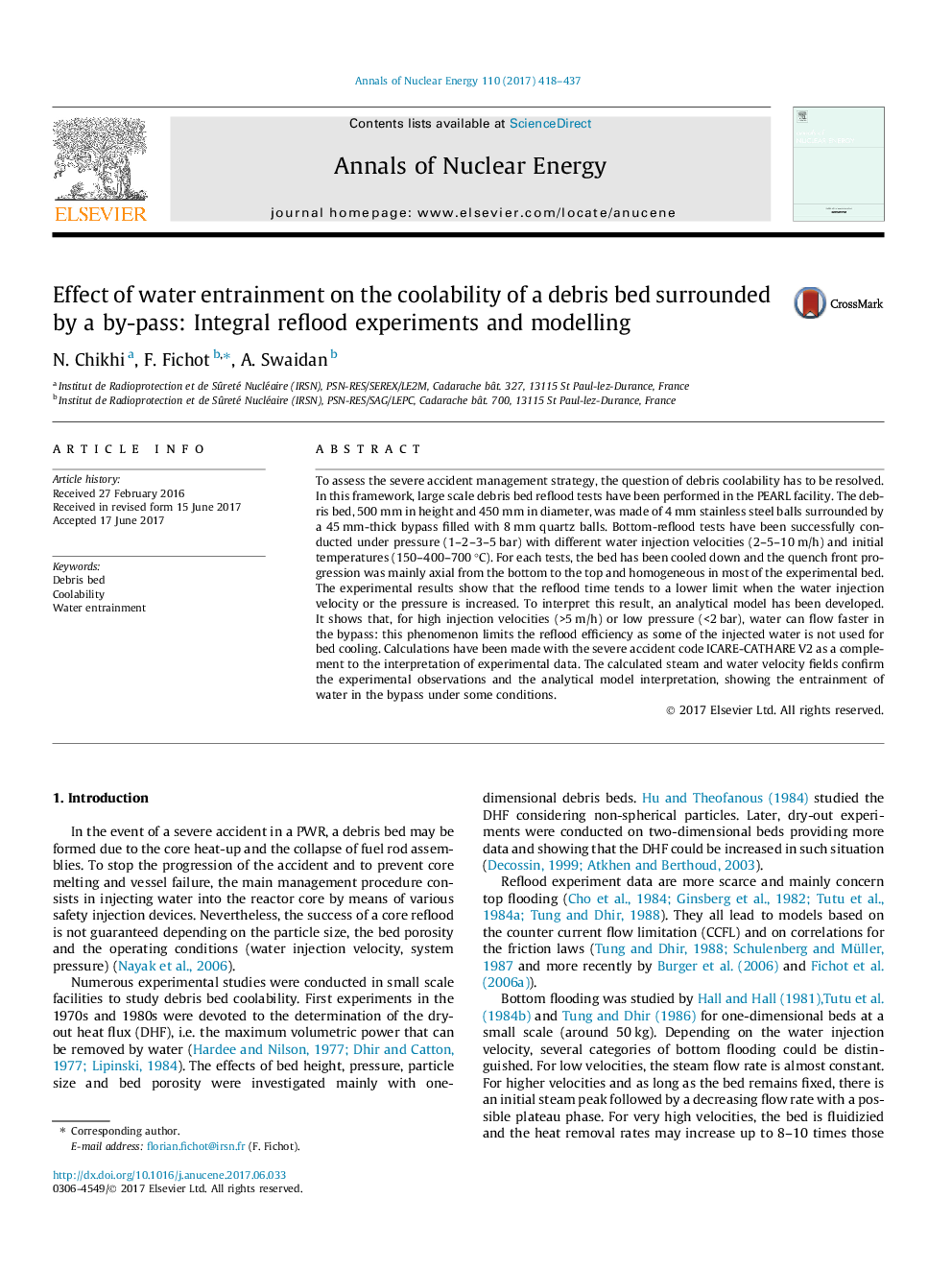| Article ID | Journal | Published Year | Pages | File Type |
|---|---|---|---|---|
| 5474947 | Annals of Nuclear Energy | 2017 | 20 Pages |
Abstract
To assess the severe accident management strategy, the question of debris coolability has to be resolved. In this framework, large scale debris bed reflood tests have been performed in the PEARL facility. The debris bed, 500 mm in height and 450 mm in diameter, was made of 4 mm stainless steel balls surrounded by a 45 mm-thick bypass filled with 8 mm quartz balls. Bottom-reflood tests have been successfully conducted under pressure (1-2-3-5 bar) with different water injection velocities (2-5-10 m/h) and initial temperatures (150-400-700 °C). For each tests, the bed has been cooled down and the quench front progression was mainly axial from the bottom to the top and homogeneous in most of the experimental bed. The experimental results show that the reflood time tends to a lower limit when the water injection velocity or the pressure is increased. To interpret this result, an analytical model has been developed. It shows that, for high injection velocities (>5 m/h) or low pressure (<2 bar), water can flow faster in the bypass: this phenomenon limits the reflood efficiency as some of the injected water is not used for bed cooling. Calculations have been made with the severe accident code ICARE-CATHARE V2 as a complement to the interpretation of experimental data. The calculated steam and water velocity fields confirm the experimental observations and the analytical model interpretation, showing the entrainment of water in the bypass under some conditions.
Related Topics
Physical Sciences and Engineering
Energy
Energy Engineering and Power Technology
Authors
N. Chikhi, F. Fichot, A. Swaidan,
